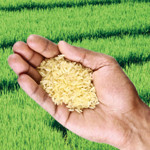
So says Richard Werran, md of Cert ID Europe. The company provides food safety certification against the British Retail Consortium, non-genetically modified organism (GMO), EU and ProTerra standards.
"Food manufacturers don't realise that the industry is changing at an incredible pace," said Werran. "They need to wake up and approach their global supply chains with their eyes wide open and their antennae up."
As the instances of global sourcing continue to increase, so do the discoveries of imports containing GM ingredients.
GM ingredients
So far this year, the EU's Rapid Alert System for Food and Feed (RASFF) has detected 26 incidents of unauthorised GM rice and derivatives from China, five incidents of Basmati rice from India and Pakistan and nine incidents of unauthorised GM papaya from Thailand.
"You'd be surprised how many importers don't realise they're legally responsible for the product and will be prosecuted," said Werran. "It's a worrying blindspot."
"Is the PCR [polymerase chain reaction] testing in China any good? Does it use the latest protocols? Can you trust the documentation you receive? Has that supplier been audited? Has your ingredients supplier even been to China? These are all questions food manufacturers should be asking," said Werran.
Werran reported seeing risk assessments that were years out of date and PCR tests with "ancient protocols". Another worrying trend was the rise in counterfeit documentation, enabled by access to image manipulation software.
Counterfeit documentation
"Five years ago we would come across this once a year but now we're seeing it five to six times a year as increasing numbers of organisations seek raw materials from Asia," he said. "We tend to be very trusting in Europe and take things at face value but all documentation has to be challenged."
Werran stressed the merit of working with European supply chains, which operate with mature systems that have seen "huge advancements" in the last 10 years.
"Using PCR testing from a Asian lab is like using Windows 95, while testing from a European lab would be on a par with Windows 7. European tests can quantify GM content at levels from 0.05%," he said.
"We've got to get ahead of the problem that global sourcing raises. But it requires effort and commitment and overcoming the inertia of change. We can't drag food manufacturers kicking and screaming into joined-up testing and certification."





